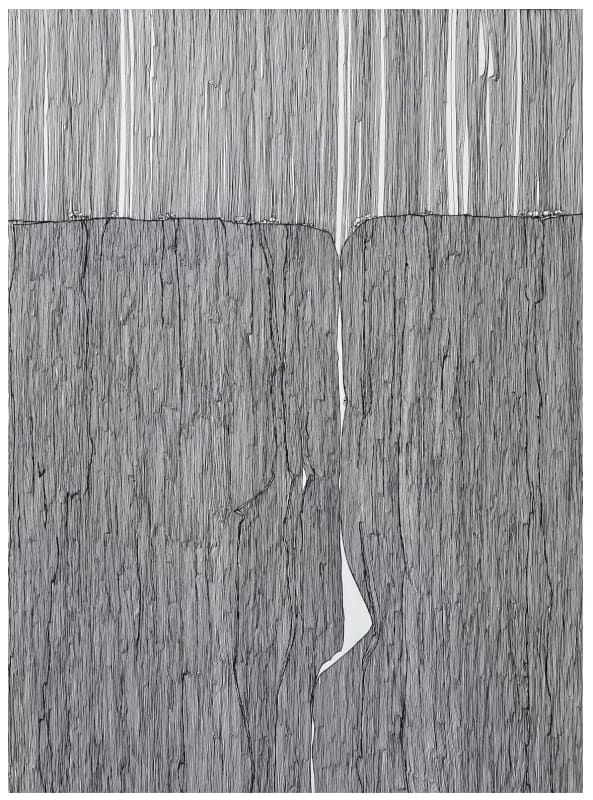Trained in architecture and fine arts in Brussels and now based in Australia, Lorraine Defleur develops a body of work nourished both by the rigor of her studies and by her encounter with Australian light and the cultures of the First Nations. Her practice is structured around repeated black lines that unfold like organic structures or fragmented weavings, allowing openings to surface toward the white of the paper — breaches that open onto the infinite.
Between observation of reality and abstraction, the artist composes interior landscapes where nature and human intervention confront one another. The line, guided by an almost seismographic movement, becomes the expression of intuitive thought, arising from a meditative and repetitive process. The work emerges through a shift in which the gesture surpasses conscious intention, revealing forms with universal resonance.
Since childhood, a fascination with maps, grids, and labyrinths has shaped her way of seeing. This interest in systems, territories, and their tensions now intersects with a reflection inspired by the art of Australia’s First Nations, where land, memory, and spirituality remain intimately connected. From this perspective, her work questions dualities — chaos and balance, structure and organicity, reason and intuition — understood as forces that coexist and intertwine.
Two main directions structure her approach.
The first explores the emergence of order out of chaos: rapid strokes, superimpositions, empty spaces that breathe and create pauses. These drawings, akin to open labyrinths, invite the gaze to wander, to lose itself, to rediscover lines of meaning.
The second stages the confrontation between human systems and natural dynamics. In these works, nature appears as a resilient, silent force, capable of transforming and reoccupying space, revealing the fragility of the balance between human ambition and the power of the elements.
Each line thus becomes an emotional cartography, a path of resilience and transformation. From repetition arises a form that the artist discovers at the same time as the viewer, leaving each person free to name it, to inhabit it, to recognize themselves within it.
Lorraine Defleur (b. 1970 in Brussels) holds a Master degree in Architecture (I.S.A.C.F. La Cambre, Brussels, Belgium) and tertiary qualification in Visual Arts. She lives and works in Australia.
